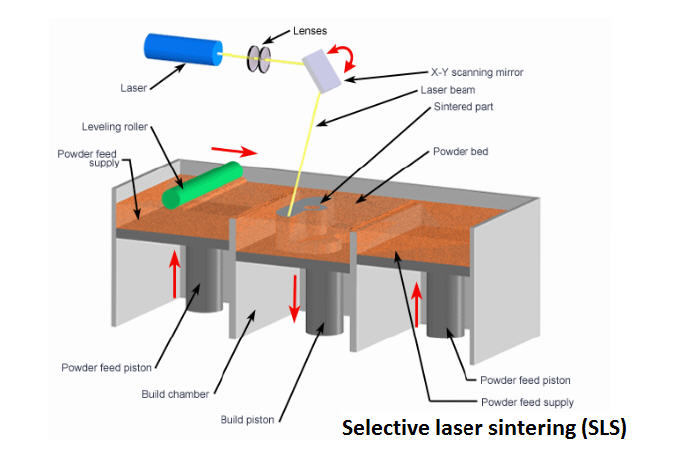Selective Laser Sintering (SLS)

Selective Laser Sintering (SLS) is 3D printing technology which uses a laser to fuse plastic, metal, glass, or ceramic powder to create a 3D part.
How Selective Laser Sintering (SLS) Works
First, users create a 3D design using a 3D modeling program and save it as an STL or OBJ file. This file is then sent to the 3D printer’s interfacing software, which slices the model into sections and determines how the printer will print each layer. Then the powder is preheated in the powder bed. The printer prints a layer of powder which is fused together by the laser. The process is repeated until the part is complete.
History of Selective Laser Sintering (SLS)
SLS was developed by Dr. Carl Deckard and Dr. Joe Beaman at the University of Texas during the 1980s. Deckard and Beaman were working with the Defense Advanced Research Projects Agency (DARPA), which is an agency responsible for creating new technologies for military use. Deckard and Beaman founded a company called DTM, which was bought by 3D Systems in 2001.
Benefits of Selective Laser Sintering (SLS)
SLS uses powder to support the part and does not need additional support material. This allows users to print designs that were impossible to print without support material, saving time and material. This will also ensure the parts are the correct dimensions because users will not need to sand off support material that may have left marks.
To learn more about the latest in 3D Printing, check out our 3D printing.